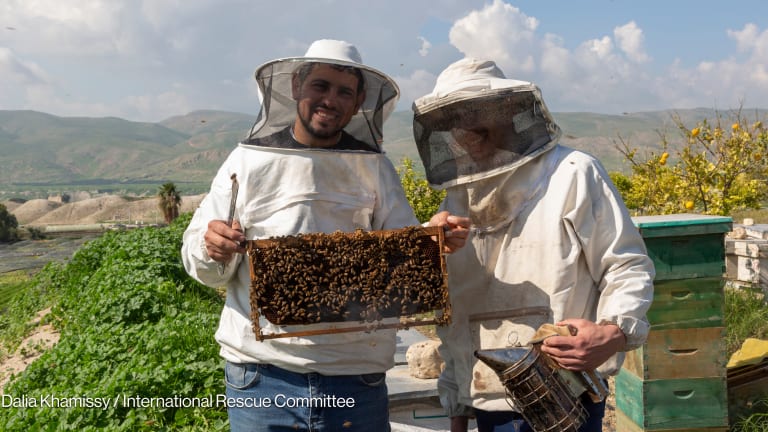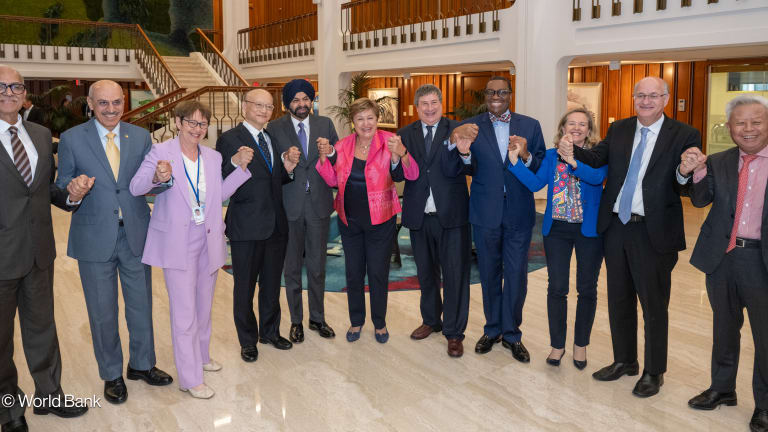
In September 2015, I joined 193 youth representatives at the United Nations Sustainable Development Summit as Malala Yousafzai addressed world leaders by saying: “world leaders sitting up there, look up because the future generation is raising their voice.” That historic summit marked the beginning of the most ambitious plan for people and planet in the history of multilateralism. Five years later, we’re falling behind in achieving the Sustainable Development Goals.
Despite a significant buy-in by state and non-state actors, coupled with wide recognition for the centrality of the SDGs, a myriad of reasons contributes to why we are still lagging behind; the pandemic being the most recent. Threatening the lives and livelihoods of people around the world, it challenges realistic achievement of the goals, exposing stark inequalities and injustices in areas such as health and well-being, access to quality education, gender equality, environmental protection, and peace.
It would be easy to hang the significant delay in achieving the goals on the pandemic. However, progress was already uneven before COVID-19. The 2020 social progress index revealed a startling prediction: the SDGs may only be achieved in 2082 or, with additional risks of delay, to 2092. There is a heightened sense of responsibility and urgency for ensuring concrete, lasting actions to advance the SDGs.
The global impact of COVID-19 on young people
Young people in particular have been disproportionately affected by the pandemic. The International Labour Organization reports that more than 1 in 6 young people have become unemployed since the beginning of the pandemic. Additionally, 267 million young people worldwide are estimated to be lacking access to employment, education, or training. “The Sustainable Development Goals Report 2020” states that school closures throughout the year kept 90% of all students out of school, reversing years of progress on education. National-level lockdowns also drastically increased the risk of violence against women and girls.
Paying the price: Pandemic puts DRC’s fragile health system at risk
In eastern DRC, the pandemic is making it hard for youth and women to access sexual health and reproductive services. Health workers are doing their best to provide care despite challenges.
As youth will certainly feel the long-term consequences of the pandemic, how can we still achieve the SDGs and support billions of young people to recover and thrive in a post-pandemic world? Plans for post-pandemic recovery and SDG achievement are strongly intertwined, and youth are the nexus between the two.
A generation that can unlock for the future
The fact that this generation of young people is ready to tackle the most pressing social, economic, and environmental challenges facing our world should is no surprise.
In 2012, Yousafzai and two other girls were shot as they stood up for the right to education for girls. Yousafzai has since won a Nobel Peace Prize and continues to champion girls’ education through her foundation, the Malala Fund.
Greta Thunberg’s fiery speech at the World Economic Forum in 2019 told world leaders that our planet was on fire and that they were responsible for fueling the flames. Her school strike for climate change has grown into a global grassroots movement, Fridays for Future. A few months ago, Gitanjali Rao, the first-ever TIME’s Kid of the Year — also a science, technology, engineering, and math scout — captivated the world as she explained how technology can tackle problems like addiction and cyberbullying.
It’s ironic to note that all three are girls, and yet as of 2020 full gender equality remains unreached with a long way to go.
These girls and so many other young leaders, activists, and advocates in every corner of the globe share a common bond: their passionate commitment to make the world a better place. Rather than waiting for someone else to solve a problem, they stepped up to be the change themselves. The unshaken belief of “If I can do it, so can you” that they exude has inspired millions of young people — and adults — around the world to be the change they want to see.
The deep, altruistic, and purpose-driven qualities inherent in today’s youth are critical for the necessary advancements in achieving the SDGs. There is a greater need to find balance between people, planet, and prosperity, and this generation has proven time and again that they are ready to fight for a better future rooted in collective peace and sustainability.
A hyperconnected generation
A global movement serving more than 54 million young people, the World Organization of the Scout Movement understands that quality education is intrinsically tied to technology and non-formal education in this era. WOSM uses innovative digital solutions to connect, educate, and empower young people — a focus that was accelerated this past year as the pandemic forced many Scouting activities to take place online and from home. These activities are anchored in the SDGs, education for sustainable development, and global citizenship. As more young people are eager to go back to the outdoors, WOSM works to ensure that its 171 national scout organizations are ready to provide a transformative Scouting experience for young people in a post-pandemic world and to engage young people in leading the new normal.
The importance of cross-collaboration and partnerships
In line with SDG 17, WOSM works closely with organizations championing various SDGs to mobilize and activate young people in driving community-based action that directly contributes to advancing the goals. We pledged to make the world’s largest youth contribution to the SDGs and have now contributed 2 billion hours of community service and 16 million local actions toward peace and sustainable development — halfway to our goal of 4 billion hours by 2030.
Recognizing the growing concerns and added disadvantages the global pandemic has created, the Big 6 Youth Organizations — together with the World Health Organization and the United Nations Foundation — recently launched a Global Youth Mobilization to source and scale-up youth-led solutions to the pandemic, establish a youth fund to direct much-needed funding towards youth organizations, and outline policy recommendations in support of young people championing a post-pandemic world.
These kinds of multisectoral partnerships highlight that by working in collaboration with others, we can unlock opportunities to engage and enable young people to actively contribute to solutions-based initiatives, and advocate for a youth-led future in driving the achievement of the SDGs.
Investing in youth will define what the future may look like
I still believe that the SDGs are the best framework we have to secure a better future for all. However, radical effort is needed to change the way we approach the goals. With a decade of action announced, should we double down on some key goals that may unlock the potential to accelerate others? Should we combine efforts that can bring the required progress in a unified manner?
It’s true that the global pandemic has set us back by undoing some of the progress over the past five years and yet, the lessons of the COVID-19 response are vital to achieving the SDGs. The evident learnings from the pandemic show that when we’re forced to pivot, we can turn the unthinkable to the inevitable, with a remarkable acceleration of trends in the span of few months. This is the sense of urgency and innovation we need in order to put the SDGs back on track before it is too late.
Despite insurmountable challenges ahead, young people around the world continue to persevere towards creating a better world. Their relentless commitment, deep understanding, and altruism may hold the key to ensuring we don’t miss the mark by too much. This is a generation that cares deeply and will stand up for what they know is theirs, and what they believe is right. They are unafraid to speak their mind, bravely call our bluff, and are ready to get to work. Youth are natural leaders in leading the way for a new normal, and this is a key reason why countries must prioritize and invest in youth.








